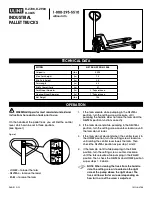
E23-6
Features - servicing
Rational use of batteries
Only fully charged batteries will allow you to start your engine properly.
The original battery / alternator unit enables different electrical equipment to be used and
gives optimum battery charging.
Get the charging capacity of your batteries checked regularly. It diminishes in cold weather.
In winter, only use necessary electrical equipment.
If numerous accessories (refrigerator, coffee maker, micro-wave oven, television set, inde-
pendent heater, etc...) are fitted to the vehicle, it is considered necessary to fit batteries with
a higher rated capacity. Take advice from your dealer.
The capacity of a battery is expressed in Ampere-hours (Ah).
The consumption of an electrical appliance in amperes (A) is connected with the time of use.
Example: Television set (2A) x 2 hours = 4 A/h.
Engine running
: The alternator supplies the energy; the batteries compensate, if necessary.
Engine shutdown
: Only the batteries supply the energy.
Limit your consumption and realize that a minimum of 50% of the battery capacity is nec-
essary for starting the engine.
Main appliances and their electrical consumption in 1 hour
– Ignition position = 4 A
– Cab overhead light = 2 A
– Side/parking lights = 5 A
– Refrigerator = 3 A
– "Air" type independent heater = 2 A
– Tail-lift = 150 A
– "Air / water" type independent heater = 10 A
– Coffee maker = 10 A
If the forecast calculation
reveals a battery discharge of more than 50%, limit the number
of appliances or compensate by intermediate charging (engine running at 1500 rpm for at
least 1 hour).
Batteries connected in parallel: the capacities are added together
(2 x 12 V - 14 Ah = 12 V - 280 Ah).
Batteries connected in series: invariable capacity (2 x 12 V - 140 Ah = 24 V - 140 Ah).
Summary of Contents for Premium DXi 11
Page 14: ...A 8 Foreword...
Page 44: ...B2 2 Presentation...
Page 45: ...B2 3 Presentation...
Page 46: ...B2 4 Presentation...
Page 47: ...B2 5 Presentation...
Page 48: ...B2 6 Presentation Dashboard...
Page 49: ...B2 7 Presentation...
Page 51: ...B2 9 Presentation...
Page 66: ...B2 24 Presentation Key to switches Dashboard...
Page 73: ...B2 31 Presentation...
Page 74: ...B2 32 Presentation...
Page 76: ...B2 34 Presentation...
Page 80: ...B2 38 Presentation...
Page 82: ...B2 40 Presentation...
Page 118: ...B2 76 Presentation...
Page 126: ...B3 8 Presentation First aid kit Depending on your vehicle s equipment First aid kit location 1...
Page 138: ...C2 8 Driving...
Page 155: ...C4 11 Driving Never let the engine speed reach the red zone runaway speed...
Page 198: ...C5 2 Driving Engine stop control cab tilted 1...
Page 200: ...C5 4 Driving...
Page 228: ...D1 26 Use of the equipment...
Page 230: ...D2 2 Use of the equipment...
Page 231: ...E1 1 Features servicing EATURES SERVICING Identification Vehicle identification...
Page 238: ...E2 6 Features servicing...
Page 254: ...E3 16 Features servicing Fuses in fuse box 1 located in battery compartment...
Page 268: ...E4 12 Features servicing Lubrication diagram s 4x2 rigid and tractor...
Page 269: ...E4 13 Features servicing 6x2 rigid and tractor...
Page 270: ...E4 14 Features servicing...
Page 308: ...E9 4 Features servicing...
Page 320: ...E11 2 Features servicing...
Page 322: ...E12 2 Features servicing...
Page 324: ...E13 2 Features servicing...
Page 326: ...E14 2 Features servicing...
Page 334: ...E17 4 Features servicing...
Page 336: ...E18 2 Features servicing...
Page 346: ...E20 8 Features servicing...
Page 350: ...E22 2 Features servicing...
Page 358: ...E23 8 Features servicing...
Page 360: ...E24 2 Features servicing...
Page 361: ...E25 1 Features servicing EATURES SERVICING Starter Starter types Starter Mitsubishi...
Page 362: ...E25 2 Features servicing...
Page 366: ...E27 2 Features servicing...
Page 378: ...F 10 Quick breakdown repair...
Page 384: ......
Page 385: ...A1 1 Driving RIVING Driving position...
Page 386: ...A1 2 Driving Driving position Key to switches Dashboard...
Page 392: ...A2 4 Driving...
Page 396: ...A3 4 Driving...




































